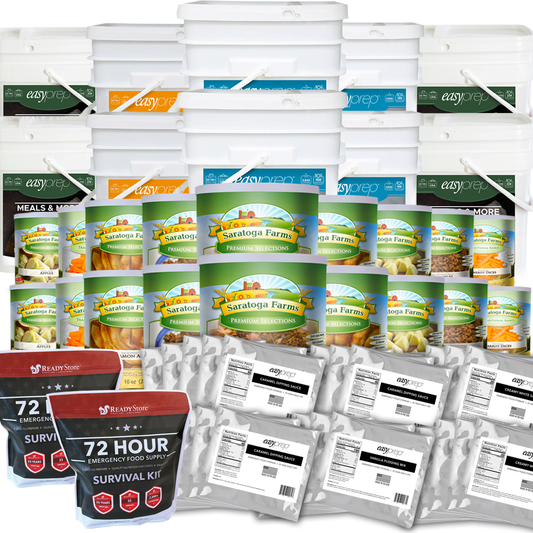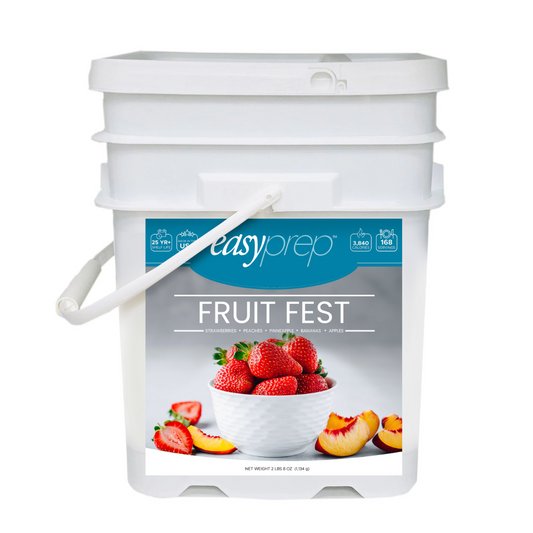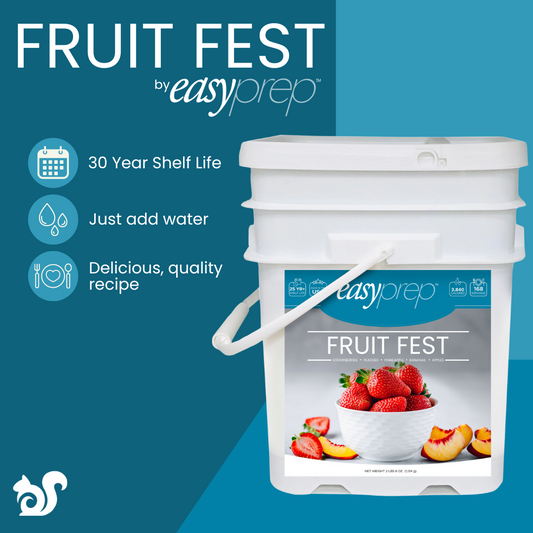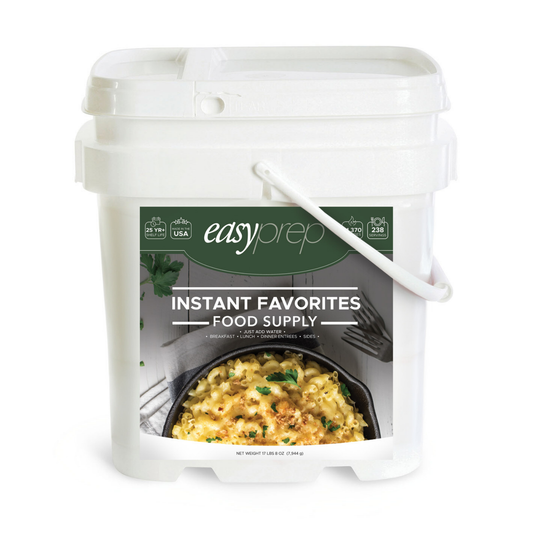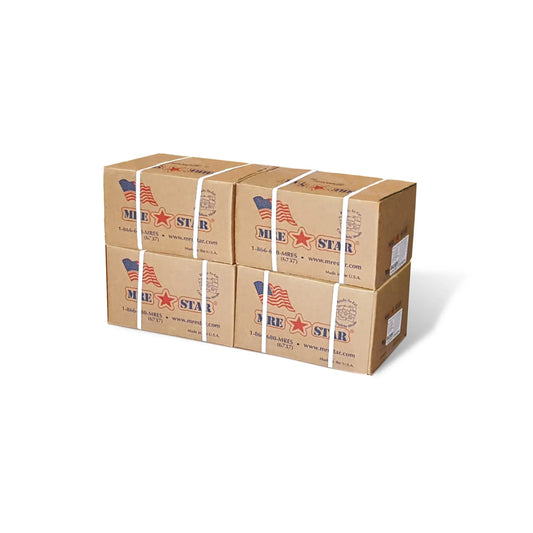Build Your Own Rabbit Hutch
16 Jan 2020
There are two basic ways to build a rabbit hutch. One is with an outdoor self-contained hutch. These typically have wooden frames and wire cages, and two to four rabbits are kept in each of the hutches. These units are portable and can be moved around in the shade to keep the rabbits cool in the summer. In colder months, they can be brought indoors for protection of the rabbits from snow and wind. Another way to start is with steel wire hutches suspended from the joists or ceiling indoors. They can also be simply placed upon a framework inside and existing building.
If you have basic mechanical skills, you can make these cages with wire bought at the local hardware store. Or you can buy ready-made wire hutches.
 Some Basics to Consider
Avoid any cages and hutches made entirely from wood. These will become soaked with urine and are difficult to sanitize between litters. And an even bigger problem is that the rabbits will tend to gnaw on the wood.
From the standpoint of easier management, sanitation, and good health, avoid all-wooden hutches. And be wary of used cages, as you may be inadvertently buying the former owner’s health problems.
The floor area needed to house a full-grown rabbit varies with breed and size, but hutches should generally be built about 30 inches wide and never less than 24 inches wide. This allows you to easily reach the rear of the hutch.
The length of the hutch should vary by breed: Small breeds are fine with a two-foot long hutch; medium breeds need about three-foot long hutches. Large breeds need four-foot long hutches.
A free-standing outdoor hutch should be covered with a tight, sloping roof two feet above the floor in the front and 18 inches above the floor in the rear. Allowing a six- to eight-inch overhang in the front is also good for rain runoff and shade.
The floor is the most important aspect of the construction of the hutch. It should be more or less self-cleaning to protect the rabbits’ health.
By “self-cleaning” they should allow urine and droppings to fall to the ground. Floors can be made of 16-gauge wire or galvanized metal. If the wire has holes that are overly wide, they may prove uncomfortable for the rabbits to move around on. Outdoors, urine and droppings can fall to the soil; indoors, you will need a pan or plastic sheeting under the hutch to catch the droppings.
Building a Basic Wire Rabbit Hutch
Constructing an all-wire rabbit hutch is the easiest, most affordable option for the typical homesteader.
Constructing several independent rabbit hutches makes them easier to move around outdoors during the summer and bring indoors during the winter. It also helps prevent disease from spreading from one hutch to the next, as they can be isolated and quarantined if necessary.
While you can build your own with the following instructions and materials, you can also acquire perfectly good wire rabbit hutches inexpensively from retailers.
Some Basics to Consider
Avoid any cages and hutches made entirely from wood. These will become soaked with urine and are difficult to sanitize between litters. And an even bigger problem is that the rabbits will tend to gnaw on the wood.
From the standpoint of easier management, sanitation, and good health, avoid all-wooden hutches. And be wary of used cages, as you may be inadvertently buying the former owner’s health problems.
The floor area needed to house a full-grown rabbit varies with breed and size, but hutches should generally be built about 30 inches wide and never less than 24 inches wide. This allows you to easily reach the rear of the hutch.
The length of the hutch should vary by breed: Small breeds are fine with a two-foot long hutch; medium breeds need about three-foot long hutches. Large breeds need four-foot long hutches.
A free-standing outdoor hutch should be covered with a tight, sloping roof two feet above the floor in the front and 18 inches above the floor in the rear. Allowing a six- to eight-inch overhang in the front is also good for rain runoff and shade.
The floor is the most important aspect of the construction of the hutch. It should be more or less self-cleaning to protect the rabbits’ health.
By “self-cleaning” they should allow urine and droppings to fall to the ground. Floors can be made of 16-gauge wire or galvanized metal. If the wire has holes that are overly wide, they may prove uncomfortable for the rabbits to move around on. Outdoors, urine and droppings can fall to the soil; indoors, you will need a pan or plastic sheeting under the hutch to catch the droppings.
Building a Basic Wire Rabbit Hutch
Constructing an all-wire rabbit hutch is the easiest, most affordable option for the typical homesteader.
Constructing several independent rabbit hutches makes them easier to move around outdoors during the summer and bring indoors during the winter. It also helps prevent disease from spreading from one hutch to the next, as they can be isolated and quarantined if necessary.
While you can build your own with the following instructions and materials, you can also acquire perfectly good wire rabbit hutches inexpensively from retailers.
 Basic Rabbit Hutch
Materials
• Plywood
• Wood stain or outdoor paint
• Metal Hinges
• 2x4 wooden boards
• Screws
• Metal ties
• Saw
• Wire cutters
• Wire mesh (16- to 18-gauge)
• Gate hook and eye
Cage Instructions
Measure and cut the 2x4 boards to the desired length for the size of the rabbit hutch you want to build. A hutch that is 4’ long by 2’ deep is ideal for 3-5 rabbits. Cut more 2x4 wooden boards to the desired height; 2’ in the front by 18” in the rear will provide a slanted roof for outdoor hutches. Screw the support posts to the frame.
Measure and cut the wire mesh, and attach it to the four upright posts. Use metal ties to attach the wire tightly to the posts and crosspieces. With the wire cutters, trim any excess mesh so it is flush with the frame on the bottom and three of the four sides (two long sides, and one short side).
The Door. Measure and cut 2x4 boards to fit securely on the remaining side of the hutch. Attach wire mesh tightly to the doorframe, and attach the door to the cage using the metal hinges. Screw the gate hook into the door and the eye into the cage frame. Fill in the triangular gap above the door with plywood or more wire mesh.
The Roof. Cut a piece of plywood to fit securely on the top of the cage. Paint it with exterior paint or stain it so it is water resistant. If desired, you can attach shingles to protect it from the elements instead. Nail or screw the plywood roof into place. If desired, you can also attach the roof on hinges, which may make cleaning the cage and accessing the rabbits easier.
Accessories. If desired, you can attach a watering bottle or feeding tray as well; you will likely have to cut the wire mesh to accommodate these items.
Your Feedback
Have you built a rabbit hutch? What recommendations do you have? What should other people take into consideration? How does maintaining rabbits fit into your self-sufficiency strategy?
Basic Rabbit Hutch
Materials
• Plywood
• Wood stain or outdoor paint
• Metal Hinges
• 2x4 wooden boards
• Screws
• Metal ties
• Saw
• Wire cutters
• Wire mesh (16- to 18-gauge)
• Gate hook and eye
Cage Instructions
Measure and cut the 2x4 boards to the desired length for the size of the rabbit hutch you want to build. A hutch that is 4’ long by 2’ deep is ideal for 3-5 rabbits. Cut more 2x4 wooden boards to the desired height; 2’ in the front by 18” in the rear will provide a slanted roof for outdoor hutches. Screw the support posts to the frame.
Measure and cut the wire mesh, and attach it to the four upright posts. Use metal ties to attach the wire tightly to the posts and crosspieces. With the wire cutters, trim any excess mesh so it is flush with the frame on the bottom and three of the four sides (two long sides, and one short side).
The Door. Measure and cut 2x4 boards to fit securely on the remaining side of the hutch. Attach wire mesh tightly to the doorframe, and attach the door to the cage using the metal hinges. Screw the gate hook into the door and the eye into the cage frame. Fill in the triangular gap above the door with plywood or more wire mesh.
The Roof. Cut a piece of plywood to fit securely on the top of the cage. Paint it with exterior paint or stain it so it is water resistant. If desired, you can attach shingles to protect it from the elements instead. Nail or screw the plywood roof into place. If desired, you can also attach the roof on hinges, which may make cleaning the cage and accessing the rabbits easier.
Accessories. If desired, you can attach a watering bottle or feeding tray as well; you will likely have to cut the wire mesh to accommodate these items.
Your Feedback
Have you built a rabbit hutch? What recommendations do you have? What should other people take into consideration? How does maintaining rabbits fit into your self-sufficiency strategy?
 Some Basics to Consider
Avoid any cages and hutches made entirely from wood. These will become soaked with urine and are difficult to sanitize between litters. And an even bigger problem is that the rabbits will tend to gnaw on the wood.
From the standpoint of easier management, sanitation, and good health, avoid all-wooden hutches. And be wary of used cages, as you may be inadvertently buying the former owner’s health problems.
The floor area needed to house a full-grown rabbit varies with breed and size, but hutches should generally be built about 30 inches wide and never less than 24 inches wide. This allows you to easily reach the rear of the hutch.
The length of the hutch should vary by breed: Small breeds are fine with a two-foot long hutch; medium breeds need about three-foot long hutches. Large breeds need four-foot long hutches.
A free-standing outdoor hutch should be covered with a tight, sloping roof two feet above the floor in the front and 18 inches above the floor in the rear. Allowing a six- to eight-inch overhang in the front is also good for rain runoff and shade.
The floor is the most important aspect of the construction of the hutch. It should be more or less self-cleaning to protect the rabbits’ health.
By “self-cleaning” they should allow urine and droppings to fall to the ground. Floors can be made of 16-gauge wire or galvanized metal. If the wire has holes that are overly wide, they may prove uncomfortable for the rabbits to move around on. Outdoors, urine and droppings can fall to the soil; indoors, you will need a pan or plastic sheeting under the hutch to catch the droppings.
Building a Basic Wire Rabbit Hutch
Constructing an all-wire rabbit hutch is the easiest, most affordable option for the typical homesteader.
Constructing several independent rabbit hutches makes them easier to move around outdoors during the summer and bring indoors during the winter. It also helps prevent disease from spreading from one hutch to the next, as they can be isolated and quarantined if necessary.
While you can build your own with the following instructions and materials, you can also acquire perfectly good wire rabbit hutches inexpensively from retailers.
Some Basics to Consider
Avoid any cages and hutches made entirely from wood. These will become soaked with urine and are difficult to sanitize between litters. And an even bigger problem is that the rabbits will tend to gnaw on the wood.
From the standpoint of easier management, sanitation, and good health, avoid all-wooden hutches. And be wary of used cages, as you may be inadvertently buying the former owner’s health problems.
The floor area needed to house a full-grown rabbit varies with breed and size, but hutches should generally be built about 30 inches wide and never less than 24 inches wide. This allows you to easily reach the rear of the hutch.
The length of the hutch should vary by breed: Small breeds are fine with a two-foot long hutch; medium breeds need about three-foot long hutches. Large breeds need four-foot long hutches.
A free-standing outdoor hutch should be covered with a tight, sloping roof two feet above the floor in the front and 18 inches above the floor in the rear. Allowing a six- to eight-inch overhang in the front is also good for rain runoff and shade.
The floor is the most important aspect of the construction of the hutch. It should be more or less self-cleaning to protect the rabbits’ health.
By “self-cleaning” they should allow urine and droppings to fall to the ground. Floors can be made of 16-gauge wire or galvanized metal. If the wire has holes that are overly wide, they may prove uncomfortable for the rabbits to move around on. Outdoors, urine and droppings can fall to the soil; indoors, you will need a pan or plastic sheeting under the hutch to catch the droppings.
Building a Basic Wire Rabbit Hutch
Constructing an all-wire rabbit hutch is the easiest, most affordable option for the typical homesteader.
Constructing several independent rabbit hutches makes them easier to move around outdoors during the summer and bring indoors during the winter. It also helps prevent disease from spreading from one hutch to the next, as they can be isolated and quarantined if necessary.
While you can build your own with the following instructions and materials, you can also acquire perfectly good wire rabbit hutches inexpensively from retailers.
 Basic Rabbit Hutch
Materials
• Plywood
• Wood stain or outdoor paint
• Metal Hinges
• 2x4 wooden boards
• Screws
• Metal ties
• Saw
• Wire cutters
• Wire mesh (16- to 18-gauge)
• Gate hook and eye
Cage Instructions
Measure and cut the 2x4 boards to the desired length for the size of the rabbit hutch you want to build. A hutch that is 4’ long by 2’ deep is ideal for 3-5 rabbits. Cut more 2x4 wooden boards to the desired height; 2’ in the front by 18” in the rear will provide a slanted roof for outdoor hutches. Screw the support posts to the frame.
Measure and cut the wire mesh, and attach it to the four upright posts. Use metal ties to attach the wire tightly to the posts and crosspieces. With the wire cutters, trim any excess mesh so it is flush with the frame on the bottom and three of the four sides (two long sides, and one short side).
The Door. Measure and cut 2x4 boards to fit securely on the remaining side of the hutch. Attach wire mesh tightly to the doorframe, and attach the door to the cage using the metal hinges. Screw the gate hook into the door and the eye into the cage frame. Fill in the triangular gap above the door with plywood or more wire mesh.
The Roof. Cut a piece of plywood to fit securely on the top of the cage. Paint it with exterior paint or stain it so it is water resistant. If desired, you can attach shingles to protect it from the elements instead. Nail or screw the plywood roof into place. If desired, you can also attach the roof on hinges, which may make cleaning the cage and accessing the rabbits easier.
Accessories. If desired, you can attach a watering bottle or feeding tray as well; you will likely have to cut the wire mesh to accommodate these items.
Your Feedback
Have you built a rabbit hutch? What recommendations do you have? What should other people take into consideration? How does maintaining rabbits fit into your self-sufficiency strategy?
Basic Rabbit Hutch
Materials
• Plywood
• Wood stain or outdoor paint
• Metal Hinges
• 2x4 wooden boards
• Screws
• Metal ties
• Saw
• Wire cutters
• Wire mesh (16- to 18-gauge)
• Gate hook and eye
Cage Instructions
Measure and cut the 2x4 boards to the desired length for the size of the rabbit hutch you want to build. A hutch that is 4’ long by 2’ deep is ideal for 3-5 rabbits. Cut more 2x4 wooden boards to the desired height; 2’ in the front by 18” in the rear will provide a slanted roof for outdoor hutches. Screw the support posts to the frame.
Measure and cut the wire mesh, and attach it to the four upright posts. Use metal ties to attach the wire tightly to the posts and crosspieces. With the wire cutters, trim any excess mesh so it is flush with the frame on the bottom and three of the four sides (two long sides, and one short side).
The Door. Measure and cut 2x4 boards to fit securely on the remaining side of the hutch. Attach wire mesh tightly to the doorframe, and attach the door to the cage using the metal hinges. Screw the gate hook into the door and the eye into the cage frame. Fill in the triangular gap above the door with plywood or more wire mesh.
The Roof. Cut a piece of plywood to fit securely on the top of the cage. Paint it with exterior paint or stain it so it is water resistant. If desired, you can attach shingles to protect it from the elements instead. Nail or screw the plywood roof into place. If desired, you can also attach the roof on hinges, which may make cleaning the cage and accessing the rabbits easier.
Accessories. If desired, you can attach a watering bottle or feeding tray as well; you will likely have to cut the wire mesh to accommodate these items.
Your Feedback
Have you built a rabbit hutch? What recommendations do you have? What should other people take into consideration? How does maintaining rabbits fit into your self-sufficiency strategy?


